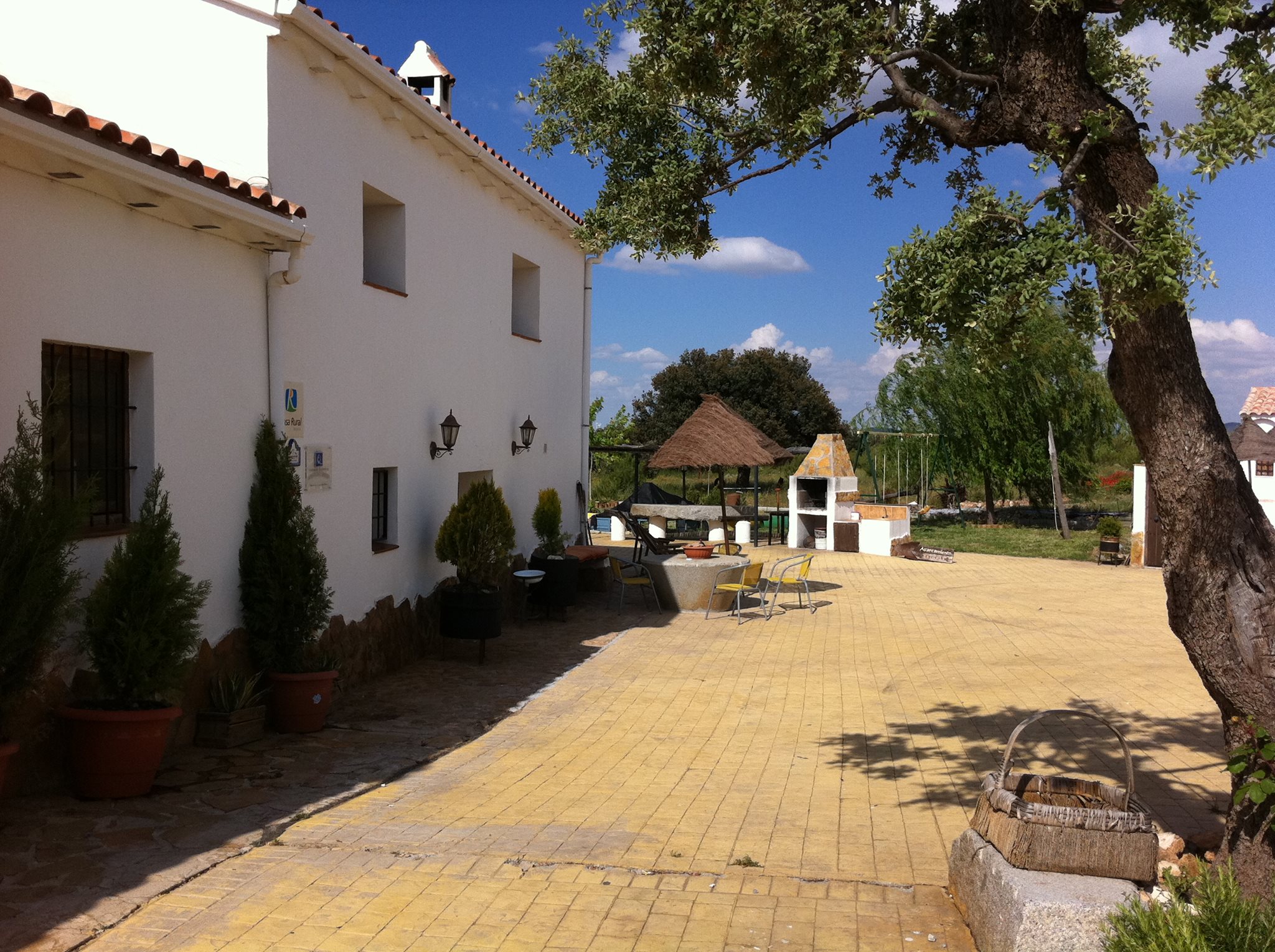The history of Cortijo Bacares
The name of the house, Cortijo Bacares, is a toponym with which it was originally created, and it is a term commonly used in the region. For example, you can mention the Tetica Bacares in the nearby Sierra de Baza Natural Park or the Bacares stream. For some, it refers to the idea that cows could graze in the area, which is supported by the fact that in some maps, it is written as “Vacares.” For others, it refers to the surname of the family that lived in the house.
The earliest references to the cortijo date back to the early 20th century when it was known as “Cortijo Vacares.” Two families lived there and were primarily engaged in dryland cereal farming. Towards the late 1960s and 1970s, it was abandoned due to a significant migration from rural areas to cities, especially coastal regions, in search of higher-quality and less strenuous work. The cortijo deteriorated to the point of being declared in ruins.
In the 1990s, the current owner and her family settled in Freila, the municipality to which the house belongs, and purchased the cortijo and the 8 hectares of land it comprises, which were then owned by three different families. This marked the beginning of restoration and conservation efforts, both for the house and its surroundings. These efforts culminated in 2005 when the cortijo opened its doors as a rural house, registered in the Andalusian tourism registry as CR/00128. These efforts continue to this day, always aiming for continuous improvement with a focus on respecting the way of life of our ancestors, promoting their culture, caring for the environment, and recycling and reusing materials.
The architectural treatment of the space respects everything that remained of the original structure, resulting in the rehabilitation-conservation of the cortijo just as it was conceived in its early days. Consequently, the cortijo is organized into three independent living units, following its traditional uses: the main dwelling, which is now Bacares 1, and the livestock pens and hayloft, which now make up Bacares 2. The pigsties and the cistern form what is now Bacares 3, and the current swimming pool occupies the former vegetable garden area.
In the past, when transportation methods were not as advanced as they are today, cortijos emerged as independent and self-sufficient entities. They provided everything necessary for the family’s survival. Hence, they had areas for animals such as pig pens, chicken coops, turkey coops, rabbit hutches, and goat pens, which were constructed without a defined plan, with additional spaces added as needed.
The dwelling unit was neither the largest nor the most important, as it only served to provide shelter for its inhabitants. However, it did feature a hearth and fireplace, along with an oven for baking bread. The land and the garden were used to grow the food that would be consumed throughout the year. Lastly, there was a cistern where rainwater was stored for limited personal hygiene (daily showers were not even a consideration back then), for cooking, and for irrigating the garden that provided sustenance for everyone. In this cortijo, these characteristics have been emphasized through rehabilitation. The cistern, as the central element of life, is still preserved today, and the past uses and customs are highlighted in the themed rooms through their decoration.
In parallel with the restoration of the houses, we have been carrying out reforestation programs at Cortijo Bacares and on various lands within the municipality of Freila. To date, we have planted over 20,000 trees. Initially, reforestation was done with native species from the area, primarily Quercus Ilex, which did not thrive due to the successive droughts of the 1990s. They were subsequently replaced with Aleppo pine reforestation, which is currently in excellent health. As a result, the exterior boasts a total area of 8,649 hectares reforested with Aleppo pine, interspersed with Holm oaks (Quercus ilex), bearing witness to the ancient Mediterranean forest that once covered the plains of Fazares where the cortijo is located.
The area also features spontaneously growing almond trees and low-lying shrubs such as esparto grass, thyme, broom, milkwort, and rockrose, which have become a refuge for a diverse range of wildlife, including partridges, rabbits, voles, and foxes. The essential idea behind this small business is to create a space where the goal is not only to minimize the ecological footprint of the activity but also to establish natural protective barriers for the region against the progressive encroachment of the desert. This, coupled with the restoration and reuse of materials, recycling, and a commitment to rational resource consumption, reduced water use, and energy conservation, earned Cortijo Bacares a place in the exclusive “I am an Ecotourist” club in 2022. Prior milestones include being awarded the Best Andalusian Destination in 2008, thanks to the promotion of local customs and culture, along with the continuous improvement criteria that led Cortijo Bacares to become the first rural accommodation in the province of Granada to receive the “Q” for quality certification.

